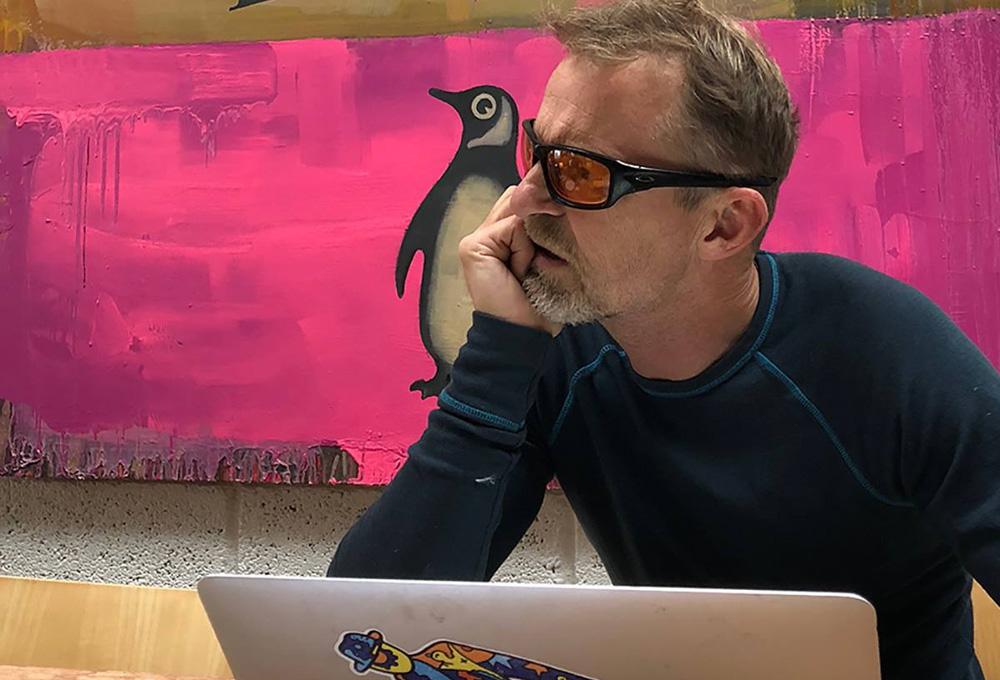We recently received the book “Kingdom”, written by the Norwegian musician and writer of crime novels Jo Nesbø. We were interested in the part where music is talked about, which is why we publish it in its original version.

‘Of course beauty isn’t an absolute quality,’ said Shannon. ‘It’s what we, each of us as individuals, say it is. Beauty is always in a context, it’s in relation to our previous experiences, everything we’ve sensed, learned and put together. People in countries all over the world have a tendency to think their own national anthem just happens to be the best in the world, that their mothers are the best cooks, that the most beautiful girl in town is also the most beautiful on the planet, and so on. The first time you come across music that’s new and strange you won’t like it. That’s to say, if it’s really strange. When people claim to like or even love music that’s completely new to them, it’s because they like the idea of the exotic, it’s stimulating, and what’s more it gives them the feeling of possessing a sensitivity and a cosmic understanding that is superior to their neighbour’s. But what they really like is what they unconsciously recognise. In the course of time that which was once new becomes a part of their experiential basis, and the conditionally learned, the indoctrination into what is lovely and what is beautiful, a part of their aesthetic sense. Early in the twentieth century American films began teaching people all over the world to find beauty in white film stars. And in time black too. Over the last fifty years Asian films have done the same for their stars. Although it’s like music, their beauty has to be something the public recognise, an Asian mustn’t be too Asiatic, but have a similarity to an established idea of beauty, an ideal which is still white. Seen from that perspective, the word sense when used of aesthetics is, at best, imprecise. We are born with vision and hearing, but in aesthetics we all start from a clean sheet. We—’

She stopped abruptly. Smiled fleetingly and raised the wine glass to her lips, as though realising she was lecturing to an audience that was probably not interested. We sat a while in silence. I coughed.
‘I read somewhere that everyone, even the most isolated tribes, like symmetry in a face. Doesn’t that suggest that some things are congenital?’
Shannon looked at me. A smile glided across her face and she leaned forward in her chair.
‘Maybe. On the other hand, the rules governing symmetry are so simple and strict that it’s not surprising we share the taste for it all over the world. The same way belief in a higher power is something that’s easy to turn to, which makes it universal but not congenital.’
‘So if I was to say that I think you’re pretty?’ The words just slipped out of me.
At first she looked surprised, then she pointed to her droopy eye, and when she spoke now her voice wasn’t warm and dark, but had a harsh, metallic ring to it. ‘Then it’s either a lie or you’ve failed to comprehend the most elementary principles behind the idea of beauty.’
I realised I had crossed some kind of line. ‘So then there are principles?’ I said, trying get back over on the right side again.
She gave me a look as though trying to decide whether to let me get away with it or not. ‘Symmetry,’ she said at last. ‘The golden ratio. Shapes that imitate nature. Complementary colours. Harmonising notes.’
I nodded, relieved that the conversation was back on the rails again but knowing I’d have a hard time forgiving myself for that slip.
‘Or in architecture, where you have functional shapes,’ she went on. ‘Which are actually the same as shapes that imitate nature. The hexagonal cells in a beehive. The beaver’s regulatory dam. The fox’s network of tunnels. The woodpecker’s hole of a nest which becomes a home for other birds. None of these are built to be beautiful, and yet they are. A house that’s good to live in is beautiful. It’s actually as simple as that.’
Jo Nesbø (photo: Facebook Jo Nesbø)

















